Farming &
Rural Life
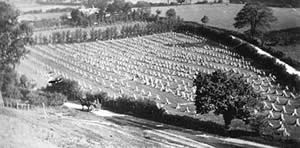 In
the past, although farms were small, they were mostly owned
by wealthy landowners, and the farmers were tenants. Noteable
landowners around Llangollen included the Williams-Wynns (see
map), the Myddletons of Chirk Castle and the Trevors. This
trend has gradually changed and, until recently, most were
owned by individual farmers. However, agriculture is now in
crisis and as small farms go out of business, they are being
taken over by larger landowners again. The small family farm
is fast becoming a thing of the past. In
the past, although farms were small, they were mostly owned
by wealthy landowners, and the farmers were tenants. Noteable
landowners around Llangollen included the Williams-Wynns (see
map), the Myddletons of Chirk Castle and the Trevors. This
trend has gradually changed and, until recently, most were
owned by individual farmers. However, agriculture is now in
crisis and as small farms go out of business, they are being
taken over by larger landowners again. The small family farm
is fast becoming a thing of the past.
|
| top of page |
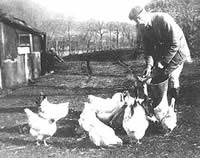
In the 19th and 20th centuries the rural
population was far greater and families much larger. It was
not uncommon for families of up to 20 people to live in the
same house. Much of the housing was rented accommodation belonging
to the landowner. In recent years more houses have become
privately owned, but house prices have soared, making it hard
for young people to stay in the rural areas.
|
| top of page |
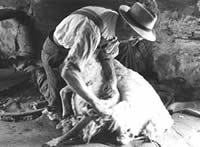
Because of the geography of
the area, hill farming is the norm – sheep are kept
in the valley fields in winter and graze the hilltops in summer.
Cattle are kept mostly for beef and dairy herds are few. Many
years ago, pigs were kept in and around Llangollen but they
are a rare sight today.
|
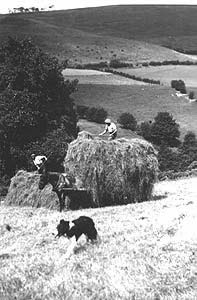
Religion was once a very important part of
rural life – children would not play, men would not
work on the farms, washing would not be hung out on a Sunday.
Families would attend chapel or church once, if not twice,
on the Sabbath. Sadly, many of the rural chapels and churches
have closed and those still open have dwindling congregations.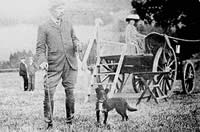 |
|
|
|
 In
the past, although farms were small, they were mostly owned
by wealthy landowners, and the farmers were tenants. Noteable
landowners around Llangollen included the Williams-Wynns (see
map), the Myddletons of Chirk Castle and the Trevors. This
trend has gradually changed and, until recently, most were
owned by individual farmers. However, agriculture is now in
crisis and as small farms go out of business, they are being
taken over by larger landowners again. The small family farm
is fast becoming a thing of the past.
In
the past, although farms were small, they were mostly owned
by wealthy landowners, and the farmers were tenants. Noteable
landowners around Llangollen included the Williams-Wynns (see
map), the Myddletons of Chirk Castle and the Trevors. This
trend has gradually changed and, until recently, most were
owned by individual farmers. However, agriculture is now in
crisis and as small farms go out of business, they are being
taken over by larger landowners again. The small family farm
is fast becoming a thing of the past.


